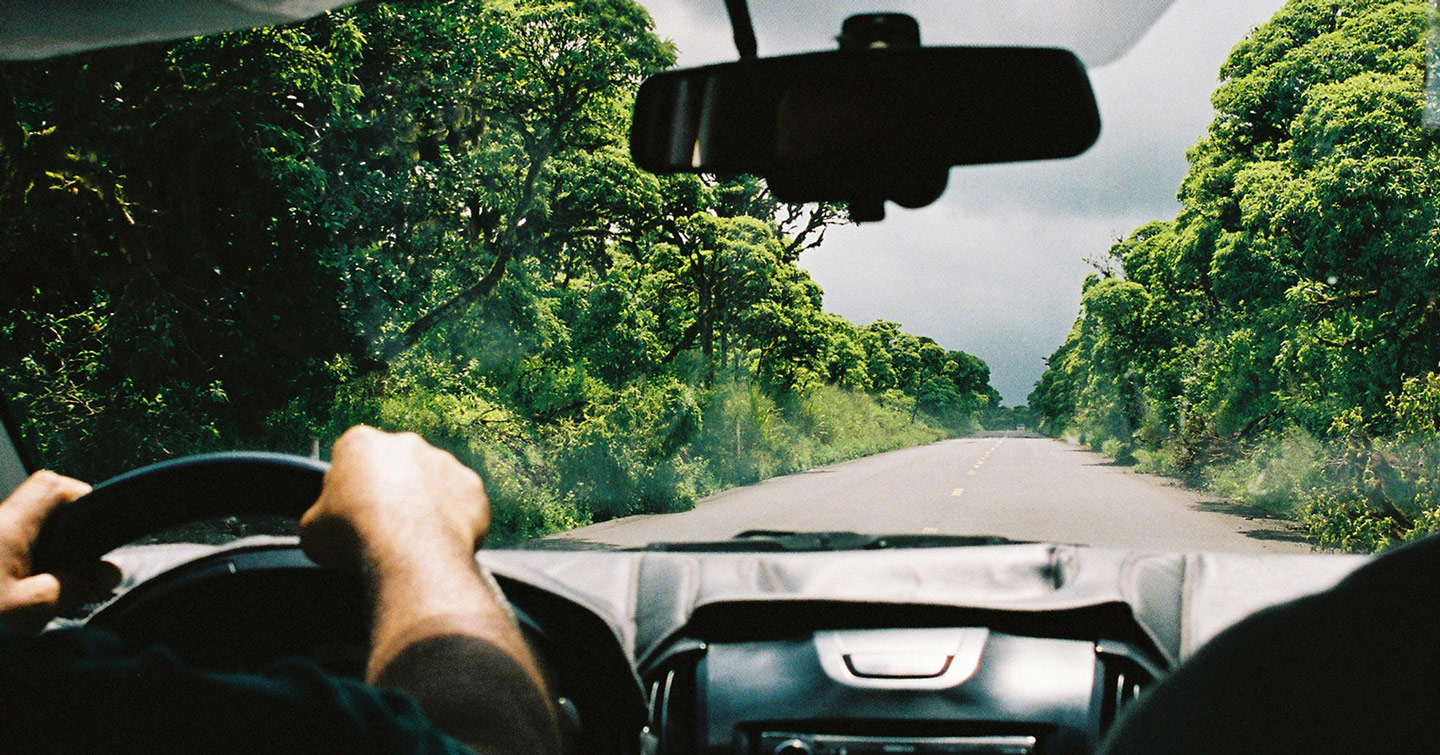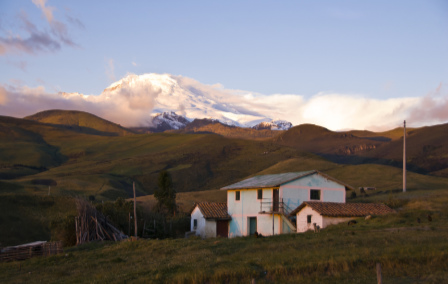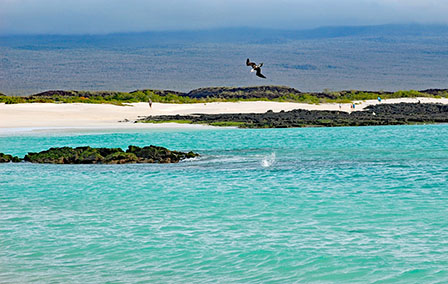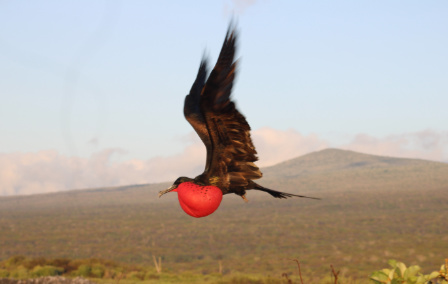
Published 29th May. 2024
Written by Henrietta Nicholson
Reading time
On a recent research trip to Ecuador, our Americas specialist, Henrietta, ventured high into the Andes before setting sail around the Galapagos Islands. Along with encountering an array of exotic wildlife (including a 25-year-old giant tortoise), she hiked up the Sierra Negra volcano and enjoyed a cooking class with a Quechua family. Read on to discover what made her trip memorable and find out some top tips for your next Ecuador adventure.
I was away for just over two weeks. I spent the first week in mainland Ecuador, then enjoyed eight days on the Galapagos Islands.
My first stop was in Quito, the capital of Ecuador. I then visited the Andean Highlands, where I spent two nights on a wonderful family-run farm and one night in Otavalo, an indigenous town with the largest covered market in South America. Next up was Cotopaxi National Park, where I spent two nights in hotels on either side of the park. For the second half of my trip I flew to the Galapagos Islands. When I arrived on Baltra Island, I boarded an eight-seater plane to Isabela Island, where I spent two nights in the main town of Puerto Villamil. From there, I took another flight to spend one night on San Cristobal Island before boarding my four-night cruise. This took me to the Espanola, Floreana, Santa Fe, and South Plaza islands, and I ended up on the main island of Santa Cruz, where I spent a final night in the highlands.

In Quito, I toured the historic UNESCO-protected city centre, admiring intricately carved churches adorned with gold leaf and enjoying quirky local cafes. I also learned to weave the famous ‘Panama Hat,’ which originated in Ecuador. In the Andean Highlands, I experienced rural life by walking, biking, horse riding and visiting a local cheese factory. I also enjoyed a cooking class with a Quechua family, learning about their kitchen garden and making regional dishes. In Cotopaxi National Park, I went on an incredible bike ride around the volcano and learned about volcanic rocks. In the Galapagos, I arrived in Isabela, a laid-back beach town – from here, I hiked the Sierra Negra volcano, a must-do for anyone who likes hiking; it took about five hours, but the terrain was incredible and reminiscent of what it must be like on Mars! On Espanola Island, I paddle-boarded, explored Gardner’s Bay and snorkelled among colourful fish. My final full day in the Galapagos Islands was spent in the highlands of Santa Cruz Island, visiting the Charles Darwin Research Station (home to a giant tortoise breeding centre) and planting a tree on the hotel grounds, as every guest is invited to do.

The wildlife sightings in the Galapagos Islands were unparalleled. I’ve never witnessed anything like it – the animals are so unafraid of humans so you could get right up close to them. It was a truly remarkable experience that I feel very fortunate to have had.

I don’t know how hidden they are, but my guide took me to two great spots in Quito. The first was Mosaico Bar, overlooking the sprawling city and mountains. The second was Heladeria San Agustin, which literally translates as ‘ice cream shop’, but it’s so much more than that – they serve sweet treats and local delicacies and have a restaurant upstairs. It’s very well disguised on the road, but as you enter, you’re hit by a wave of sounds, smells and colour, and you’re treated to a traditional carnival performance by one of the waiters.
A lot of deliciously fresh ceviche (a citrussy fish dish), which I could eat endlessly. In Quito, they serve it with popcorn, whereas in the Galapagos, they serve it with my favourite plantain chips. Everything is served with aji – Ecuador’s answer to a spicy hot sauce. Fortunately, I didn’t have to try guinea pig, a local delicacy in the Andean highlands.
I had no idea there was such a strong Catholic presence in Ecuador, with over 95% of the population identifying as Catholic, and many hotels allude to this with their interior decorations. It was also interesting to learn that only people born in the Galapagos can become guides, and their dedication to its preservation is equally impressive. Some other intriguing little facts are that the country’s main exports are bananas, flowers and shrimp, no alcohol is served during an election weekend, and hydro electrical plants predominantly power the country’s electricity system.
I had certainly never swum with sea turtles, especially ones as big as they were. It was like swimming through an aquarium, and the experience has unlocked my new obsession – I’m now desperate to learn how to dive!
Some people make the mistake of not visiting mainland Ecuador during their travels to the Galapagos Islands, and I think that’s a mistake. The Andean Highlands alone have so much to offer, not to mention the Cloud Forest and Amazon – you’re spoilt for choice when it comes to multiple environments for a varied experience.
I was pleasantly surprised by the cuisine, which in other areas of the Andes tends to be heavy with a lot of meat, potatoes and rice. Instead, I enjoyed interesting variations of this, including a lot of soup in the highlands and deliciously prepared fish in the Galapagos Islands.
When choosing between land-based or boat-based in the Galapagos, I recommend seeing the islands by boat if you don't suffer from seasickness. It allows you to see so much more than you would if you were doing day trips from one island, and the Galapagos regulations often make it feel like you have the place to yourself. The experience is also thoroughly enjoyable and comfortable from aboard a yacht; the guiding is exceptional, and the crew makes a concerted effort to keep you entertained with themed dinners, cooking demonstrations and astrology explanations at night.
Images by Henrietta Nicholson.

The gateway to the Galapagos Islands and one of the most biodiverse countries in the world, Ecuador is bursting with colour and life. Our talented team of consultants will show you that there’s more to this dinky South American nation than the famed (and must-see) islands, however. Whether you’re a wildlife lover or a culture enthusiast, we’ll tailor every detail of your trip to suit you. Be it visiting a weaving collective in a tiny Andean town or trekking through the thick Ecuadorian Amazon, we only work with the best local guides and offer authentic properties ranging from indigenous-run jungle lodges to historic haciendas.
ENQUIRE NOWPractical advice and inspiration for your next trip

Latin America has its fair share of sustainability-conscious countries. Costa Rica has been crowned the region’s eco-conscious capital, Brazil wins the award for most endemic species and even Argentina has been adding to its eco-credentials in recent years, with projects that work to protect the country’s natural assets. And while Ecuador is the fourth-smallest country on the continent, it stands proudly among its peers with various initiatives in place that aim to preserve its diverse landscapes and staggering wildlife (the country boasts just over six percent of all species on the planet).
1st November 2023 - Ecuador Responsible Travel

Picture this: you’re meandering slowly over bulbous mounds of volcanic rock and past spiney skeletons of half dead trees, all the while keeping your eyes peeled for the distant silhouette of an enormous domed-shell creeping slowly along the horizon. The air is dense with birdsong, plunging you straight into a David Attenborough documentary and leaving you with a sense that wildlife in the Galapagos Islands really is like nothing else in the world.
20th December 2022 - Ecuador Safari & Wildlife

On a recent research trip to Ecuador, our Americas specialist, Henrietta, ventured high into the Andes before setting sail around the Galapagos Islands. Along with encountering an array of exotic wildlife (including a 25-year-old giant tortoise), she hiked up the Sierra Negra volcano and enjoyed a cooking class with a Quechua family. Read on to discover what made her trip memorable and find out some top tips for your next Ecuador adventure.
29th May 2024 - Ecuador Travel Tips

Our team of destination experts will get to know you and your unique requirements for your holiday

We work with you to build an ultra-personalised holiday itinerary with your choice of accommodation, experiences and activities

All of our holidays include little extras designed to make a big difference to your trip, from fast-tracking you through airport check-in and security to our network of local Concierges